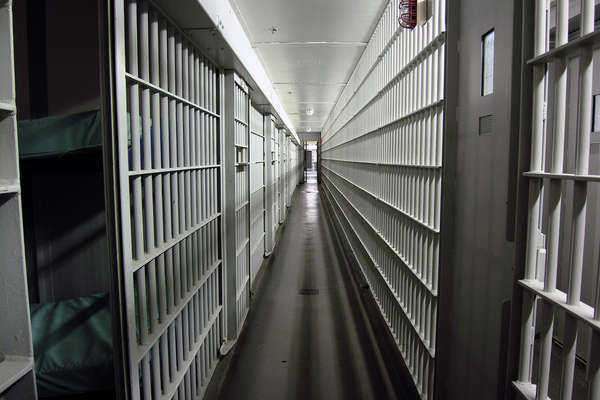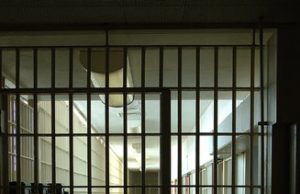
Famous Recent Cases – Indian Rover County Jail
Indian River County Jail is a correctional facility located in Vero Beach, Florida. The jail is designed to house inmates either awaiting their trial dates or who have been sentenced to serve time. The facility is operated by the Indian River County Sheriff’s Office, which is responsible for ensuring the safety and well-being of both the inmates and staff members.
Over the years, the Indian River County Jail has been the site of several high profile cases, garnering attention from headlines across the country. Here are some of the biggest cases that have occurred at the Indian River County Jail:
1. Murder of Gregory Johns
On May 15, 2014, Gregory Johns, an inmate at Indian River County Jail was found dead in his cell. The cause of death was later determined to be asphyxiation by strangulation. The suspected perpetrator was another inmate, Larry Peavy, who at the time was serving a sentence for armed robbery. Peavy was charged with first-degree murder, to which he pleaded not guilty. However, in 2016, he was found guilty by a jury and sentenced to life in prison without the possibility of parole.
The murder of Gregory Johns raised concerns about the safety and security of inmates at the Indian River County Jail. Given that the two inmates were housed in the same cell block, questions were raised about how Peavy was able to access Johns’ cell and commit the crime unnoticed. The incident prompted the Indian River County Sheriff’s Office to review its procedures and make changes to prevent similar incidents from occurring in the future.
2. Suicide of Veronica Reyes-Diaz
On July 13, 2020, Veronica Reyes-Diaz, a 28-year-old woman, was found dead in her cell at the Indian River County Jail. The cause of death was ruled as suicide by hanging. Reyes-Diaz had been arrested a few days earlier on charges of driving while under the influence. The incident sparked outrage and calls for an investigation into the quality of care being provided to inmates suffering from mental health issues.
Reyes-Diaz’s death shed light on the problem of mental health care in the criminal justice system, particularly for inmates who are awaiting trial. According to the Treatment Advocacy Center, jails and prisons are the largest providers of psychiatric care in the United States. However, the quality of care provided in these facilities is often inadequate, leaving inmates with mental illnesses at risk of harm to themselves and others.
3. Death of Diana Duve
On March 20, 2019, Diana Duve, a 26-year-old woman, was arrested on charges of driving under the influence. She was taken to the Indian River County Jail where she was held on a $50,000 bond. Two days later, she was found dead in her cell. The cause of death was later determined to be asphyxiation by hanging.
The circumstances surrounding Duve’s death raised questions about the quality of care being provided to inmates, particularly those who were at risk of harming themselves. Critics pointed out that Duve had a history of mental health issues and had attempted suicide in the past. Additionally, the jail was accused of neglecting to perform regular cell checks on Duve, which could have prevented her death.
4. Sexual Assault by Deputy Sheriff Clay Kearney
In 2016, Clay Kearney, a deputy sheriff at the Indian River County Jail, was arrested on charges of sexual battery. The victim, who remains anonymous, alleged that Kearney had sexually assaulted her while she was in his custody. The incident occurred in 2014, and the victim reported it to the Indian River County Sheriff’s Office shortly thereafter.
Following his arrest, Kearney was terminated from the Indian River County Sheriff’s Office and later pleaded guilty to the charges. He was sentenced to ten years in prison and designated as a sexual offender. The incident raised serious concerns about the safety of female inmates, particularly those who were vulnerable to sexual abuse by those in positions of authority.
5. Attack on Inmate David Winesett
In 2014, David Winesett, an inmate at Indian River County Jail, was the victim of a brutal attack by another inmate. The attack left Winesett with severe injuries, including a punctured lung, broken ribs, and cuts to his head and face. The perpetrator was identified as Christopher Masson, who had a history of violent behavior.
Following the attack, Winesett’s family filed a lawsuit against the Indian River County Sheriff’s Office, alleging that the jail had failed to protect their son from harm. The lawsuit claimed that the jail was aware of Masson’s violent behavior and should have taken steps to prevent him from harming other inmates. The case was settled out of court for an undisclosed amount.
Inside Indian River County Jail: A Closer Look at Florida’s Correctional System
Introduction
The Indian River County Jail, located in the heart of Vero Beach, Florida, serves as a critical component of the state’s correctional system. Housing inmates from Indian River County and nearby areas, it plays a pivotal role in maintaining public safety and administering justice. In this in-depth article, we will explore the Indian River County Jail, shedding light on its history, operations, challenges, and efforts toward rehabilitation and reform.
History and Background
The Indian River County Jail has a rich history dating back to its inception in the mid-20th century. It was originally constructed in the 1950s and has undergone several renovations and expansions to meet the evolving needs of the community and the criminal justice system.
- Inception and Growth: The jail was initially built to accommodate a limited number of inmates. However, as Indian River County’s population increased, so did the demand for correctional facilities. Consequently, the jail expanded its capacity over the years.
- Modernization: In recent decades, the Indian River County Jail has seen modernization efforts aimed at improving living conditions for inmates and enhancing security measures. This includes upgraded technology, improved healthcare facilities, and better training for correctional staff.
Facility and Infrastructure
The Indian River County Jail is a multi-building complex designed to house both pre-trial detainees and sentenced inmates. Its infrastructure is divided into different sections, each serving a specific purpose within the correctional system.
- Housing Units: The jail comprises several housing units, which are further categorized based on the type of inmate and the level of security required. These units include general population, maximum security, and special management units.
- Support Services: In addition to housing, the facility provides essential support services such as medical and mental health care, educational programs, and vocational training to help inmates reintegrate into society successfully.
- Security Measures: The Indian River County Jail employs a range of security measures to ensure the safety of both staff and inmates. These measures include surveillance cameras, access control systems, and well-trained correctional officers.
Inmate Rehabilitation Programs
One of the key aspects of any modern correctional facility is its commitment to inmate rehabilitation. The Indian River County Jail has made significant strides in this regard, recognizing the importance of equipping inmates with the necessary tools to reintegrate into society as law-abiding citizens.
- Educational Programs: Inmates are offered educational opportunities, including GED classes, literacy programs, and vocational training. These initiatives aim to improve their employability upon release.
- Substance Abuse Treatment: Recognizing the link between substance abuse and criminal behavior, the jail offers substance abuse treatment programs to help inmates address their addiction issues.
- Mental Health Services: The facility provides mental health counseling and therapy to inmates struggling with psychological issues. This approach not only addresses immediate concerns but also helps prevent future criminal activity.
- Reentry Programs: Indian River County Jail collaborates with community organizations to facilitate the reentry process. Inmates receive guidance on housing, employment, and other crucial aspects of reintegrating into society.
Challenges and Controversies
Like many correctional facilities across the United States, the Indian River County Jail faces its share of challenges and controversies. Addressing these issues is essential to creating a more just and effective criminal justice system.
- Overcrowding: Overcrowding is a persistent issue in many jails, including Indian River County’s. It can lead to safety concerns for both inmates and staff and hinder rehabilitation efforts.
- Mental Health Crisis: The jail, like others, grapples with a significant number of inmates dealing with mental health issues. Critics argue that jails have become de facto mental health facilities, highlighting the need for reform in mental health care and diversion programs.
- Racial Disparities: Concerns about racial disparities in the criminal justice system have not spared Indian River County. Advocates call for reforms that address systemic bias and promote fair sentencing practices.
- Staffing Shortages: Maintaining an adequate number of trained correctional officers can be challenging. Staffing shortages can lead to security concerns and limit the effectiveness of rehabilitation programs.
Reform and Future Directions
In recent years, there has been a growing recognition of the need for reform in the criminal justice system, including the operation of county jails like Indian River County Jail. Several initiatives and proposals aim to address the challenges and controversies faced by the facility.
- Diversion Programs: Advocates for criminal justice reform argue that diverting non-violent offenders away from jail and toward rehabilitation programs can help reduce overcrowding and recidivism.
- Mental Health Courts: Establishing specialized mental health courts can ensure that individuals with mental health issues receive appropriate treatment rather than incarceration.
- Community Engagement: Collaborating with community organizations and local stakeholders can create a more holistic approach to rehabilitation and reentry.
- Training and Oversight: Continued training for correctional staff and enhanced oversight mechanisms can help address issues such as staff misconduct and inmate safety.
Conclusion
The Indian River County Jail, like many correctional facilities across the United States, faces a range of challenges and controversies. However, it also embodies the potential for positive change through rehabilitation and reform efforts. As society continues to grapple with issues related to incarceration, the Indian River County Jail serves as a microcosm of the broader conversation on criminal justice reform and the pursuit of a more equitable and effective correctional system.
Indian River County Jail is in Vero Beach, Florida and is located at 4055 41st Avenue. The phone number for Indian River County Jail administrators is (772) 569-6700. As of September 2010, this facility was listed as currently housing 540 inmates. Information on Indian River County Jail and related procedures such as for visiting its inmates can be located on the Indian River County Sheriff’s Office’s website.
People who are interested in the current inmate population of Indian River County Jail can use an online function provided by the Sheriff’s Office. People can thus enter the name of the inmate, the date of which he or she was booked and that of his or her release, the serial number provided at the time of booking, and the inmate’s date of birth.
Inmates are allowed to send and receive mail, which is subject to being inspected. Images of nudity and images taken from the Internet cannot be sent to Indian River County Jail inmates, while any kind of material found to be “soiling” correspondence, such as perfume or lipstick, will provide cause to reject mail.
Letters should not contain images on the same sheet of paper, while correspondence cannot contain more than 20 photos, which individually must not exceed 4’’ x 6’’. Indian River County Jail inmates cannot send mail to other inmates in the same facility.





























